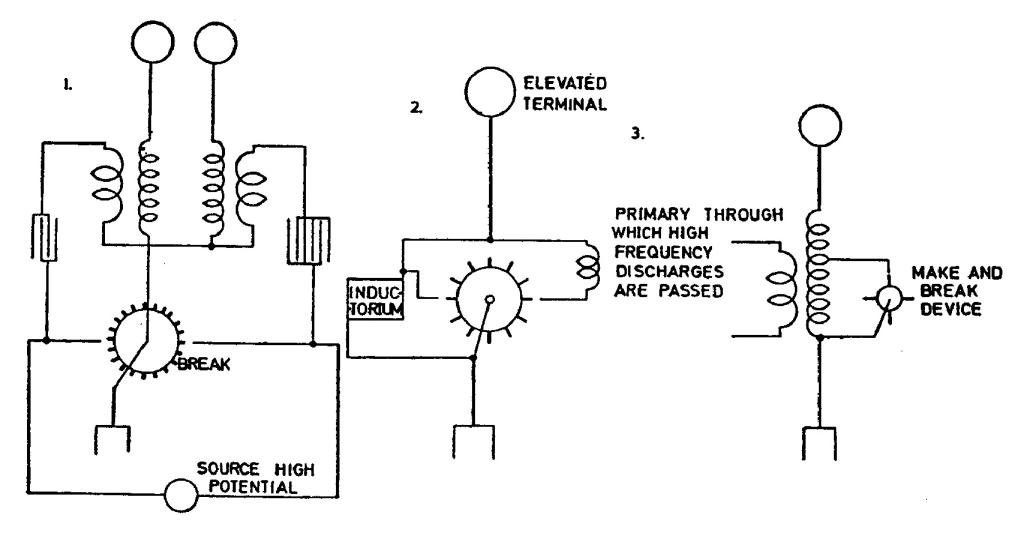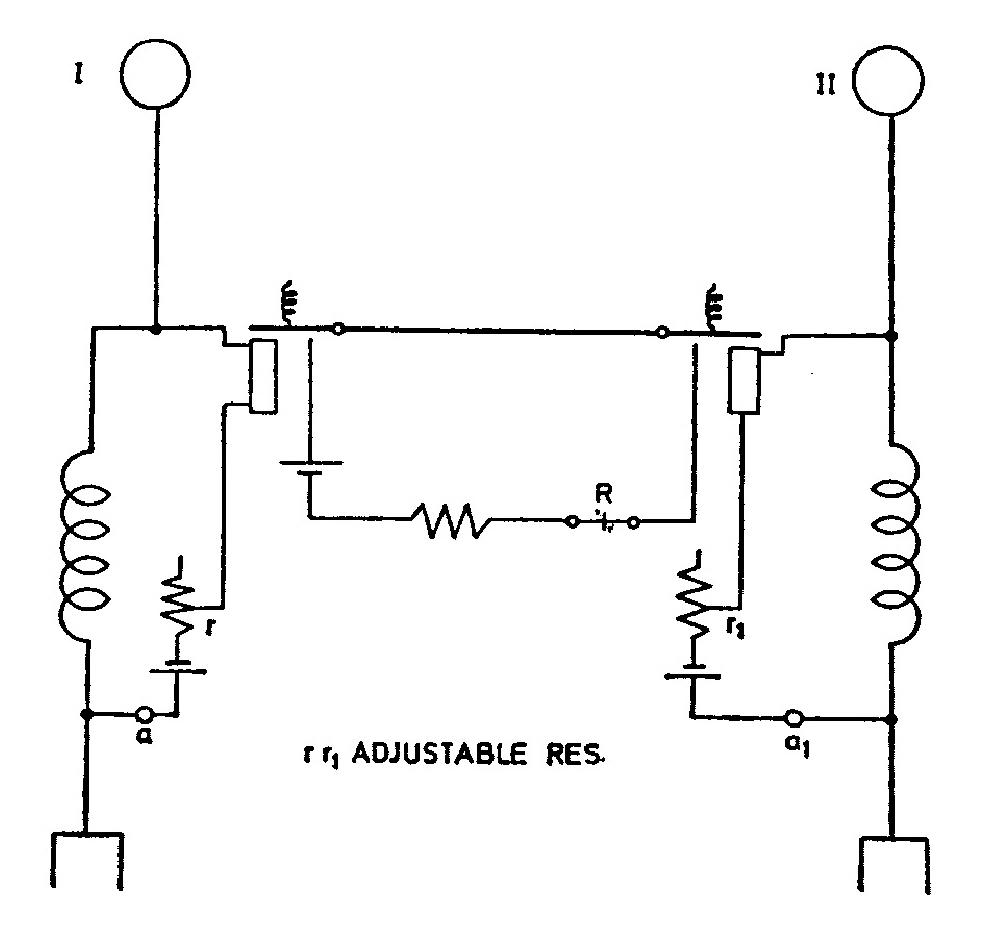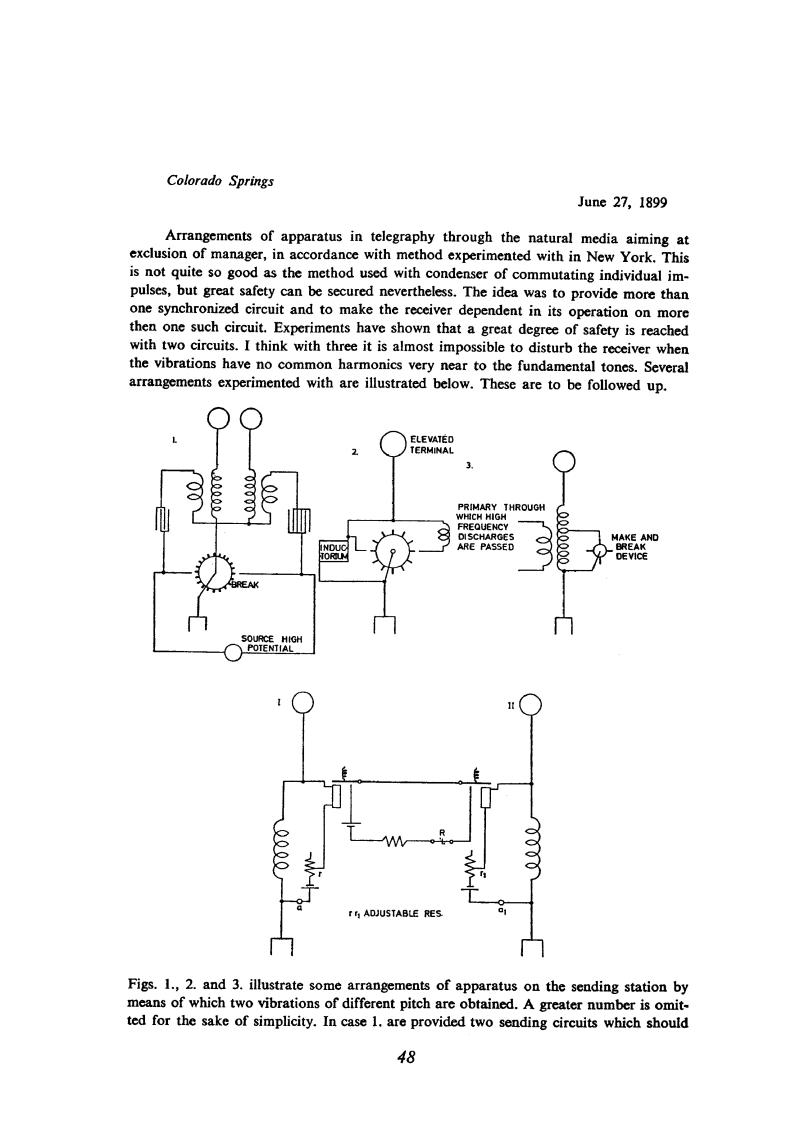
Nikola Tesla Books
Colorado Springs
June 27, 1899
Arrangements of apparatus in telegraphy through the natural media aiming at exclusion of manager, in accordance with method experimented with in New York. This is not quite so good as the method used with condenser of commutating individual impulses, but great safety can be secured nevertheless. The idea was to provide more than one synchronized circuit and to make the receiver dependent in its operation on more then one such circuit. Experiments have shown that a great degree of safety is reached with two circuits. I think with three it is almost impossible to disturb the receiver when the vibrations have no common harmonics very near to the fundamental tones. Several arrangements experimented with are illustrated below. These are to be followed up.
Figs. 1., 2. and 3. illustrate some arrangements of apparatus on the sending station by means of which two vibrations of different pitch are obtained. A greater number is omitted for the sake of simplicity. In case 1. are provided two sending circuits which should
48
June 27
The transmitter (Figs. 1 and 2) and receiver (Fig. 3) having several tuned circuits, the transmitter generating several signals at different frequencies and the receiver responding only when all these signals act at the same time, were the subject of two patent applications filed 16 July 1900 (subsequently granted)(38).
This method allows much more selective reception than a single-frequency channel, and is much less sensitive to interference, and the signal can only be decoded by a special receiver. In his patent applications Tesla likens it to a lock which can only be opened when one knows the combination.
The entry of June 27th was subsequently brought in evidence in a dispute before the U.S. Patent Office about priority to the idea of a multi-frequency system(68). The back of the page bears the stamp âU.S. Patent Office, Nov. 1902".
June 27
The circuit of transmitter (Figure No. 1 and 2) and receiver (Figure No. 3) with more than one resonant circuit so that transmitter produces two or more signals of different frequencies, and the receiver reacts when all these signals act simultaneously, are patented in two patents submitted on July 16, 1900(38).
By use of this system, considerably better selection is possible on the receiving location than when signal with only one frequency is used. At the same time this system enables considerably better protection against outside disturbances and the signal is coded so that only special receivers can receive and decode the signal. Such system (Tesla mentioned patents) compares with a lock which can be opened only by knowing the combination*.
* On the back of the original Tesla text of June 27, 1899 there is the seal; U.S. PATENT OFFICE, Nov. 15, 1902, and text by typewriter; "Tesla Exhibit Colorado Sketch".



